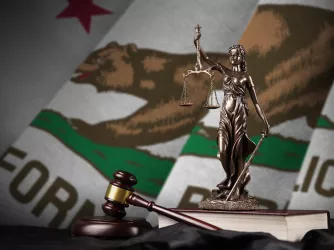Table of Contents
On free and timely public access to transcripts in New York Trump trial — First Amendment News 425
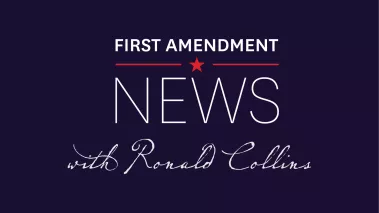
On April 19, Jim Walden and Deanna Paul, lawyers for Common Cause and New York Focus, sought to secure timely, free, and complete access to the trial transcripts in the case of People v. Trump. While you might have seen cable TV hosts reading from these transcripts on late-night programs, such access was limited, costly, and not originally promptly available to the public. On April 15, Errol Louis, writing in the New York Intelligencer, described the problem this way:
In New York — in a departure from the federal system and every other state — official rules state that transcripts of what gets said in court must be purchased from the court stenographers who have the job of recording, on a specialized keyboard, every word, action, and ruling in criminal cases. These court personnel, whose base salaries top $100,000 in many cases, can charge as much as $4.75 a page for transcripts, with the record of a single day of trial easily totaling several hundred dollars — money that goes into the pocket of the employee, not the court. And everyone who needs to see the transcripts — prosecutors, defense attorneys, members of the media, and even the court itself — has to buy transcripts from these workers, even though they are on the public payroll and get health benefits and pensions at public expense. And media organizations are forbidden from jointly purchasing and then publishing the transcripts; each outlet must buy its own copy, and publication is prohibited.
Against that backdrop, Common Cause and New York Focus filed a complaint in the Supreme Court of New York. Portions of that complaint appear below:
Pursuant to 22 NYCRR § 131, Common Cause and New York Focus (collectively, the “Applicants”), by their undersigned counsel, respectfully submit this Application requesting that the Court publish daily transcripts of proceedings on the Unified Court System webpage at the conclusion of each day the matter is heard.
[ . . . ]
Despite the Court’s efforts to assure as much transparency as possible, a serious problem remains. Most of the nation and the rest of the world have only one source to understand the proceedings and understand the evidence that undergirds this historic prosecution: the news media.
[ . . . ]
As the Supreme Court held half a century ago, “[w]hat transpires in the courtroom is public property.” Craig v. Harney, 331 U.S. 367, 374 (1947). Here, the parties and at least a dozen media outlets receive paid-for daily copies. Publishing transcripts of the court proceedings would not cause additional work for the Court or the court reporters. But posting them online for public review would significantly increase the public’s access, enhance confidence in the court system, and serve as a bulwark against mis- and dis-information about the fairness of the proceedings to all litigants.
In the end, Common Cause and New York Focus prevailed.
White House and congressional campaign to ban non-consensual AI porn
- Mohar Chatterjee, “Nonconsensual AI porn is hated on the left and right. Can Congress act on it?” Politico (May 26)

Liberals and conservatives in Congress — from Rep. Alexandria Ocasio-Cortez to Sen. Josh Hawley — all agree that something should be done to rein in nonconsensual porn generated by AI. The White House issued a “call to action” this week, urging Congress to strengthen legal protections for survivors. But lawmakers have struggled for more than a year to draft a solution, illustrating how ill-equipped Washington is to set limits on rapidly evolving technology with the power to disrupt people’s lives.
Legislation has been mired in debate over who should be held accountable for the deepfakes — with tech lobbyists pushing back on any language that would ensnare the platforms that distribute them.
Meanwhile, it is rapidly becoming easier for anyone with a couple of photos and a computer to make and distribute the videos.
“There are now hundreds of apps that can make non-consensual, sexually explicit deepfakes right on your phone,” Senate Judiciary Chair Dick Durbin (D-Ill.), who co-sponsored a bill against deepfake porn, told POLITICO in an email. “Congress needs to address this growing crisis as quickly as possible.”
Senate Majority Leader Chuck Schumer just released a plan for how Congress should regulate AI that mentioned deepfakes and privacy, but stopped short of embracing specific bill language. Instead, it proposed pouring billions into AI research and development.
[ . . . ]
Rather than write a new law, Durbin’s office crafted an amendment to the Violence Against Women Act that protects survivors of sexual assault and domestic violence. The DEFIANCE Act would give victims the right to sue creators, solicitors, possessors and distributors of AI-generated porn in civil court for $150,000 in damages plus litigation fees if the perpetrators “knew or recklessly disregarded” that their subjects did not consent to being deepfaked.
The White House appeared to endorse the approach in its recent call to action, naming the Violence Against Women Act, though it did not immediately answer POLITICO questions about whether it supports the DEFIANCE Act. It also encouraged voluntary commitments to cut down on the creation and distribution of the images.
Artistic use of the First Amendment to protest city regulation

- Rachel Kurzius, “The city made him hide his boat — so he had it painted on his fence,” The Washington Post (May 11)
When the city of Seaside, Calif., ordered resident Etienne Constable to build a fence to cover the boat parked in his driveway, he complied. But the puckish way he did it — hiring his artist neighbor to paint a realistic mural of the same exact boat on his fence — has brought him viral attention.
“We kind of hit the sweet spot between following the rules and making an elegant statement to the contrary,” says Constable.
Constable, who works in business development, has lived in the same house in Seaside for 29 years. For most of that time, his boat trailer — often with a boat attached — has sat in his driveway without issue. But in July 2023, he received a letter from the city, asserting that the municipal code requires that boats and trailers be “screened on the side and front by a six-foot-high fence,” and threatening him with a citation and a $100 fine if he failed to comply.
[ . . . ]
“I thought, ‘This is ridiculous,’ and my first reaction was to leave a nasty, nasty message at the city hall,” he says. “And then I thought, well, I might as well build a screen. . . . I’ll do what they want, but I’m not going to do it their way.”
So he started brainstorming. That’s when he had a chat with his neighbor, Hanif Panni, a muralist and graphic artist, about potentially painting the fence to look exactly like the space it was built to cover up. The two batted ideas back and forth over the fence that separated their yards. “We wanted to make an illusion,” says Panni.
Josh Blackman weighs in on Alito flap
- Josh Blackman, “The Old Gray Lady in Distress,” The Volokh Conspiracy (May 25)
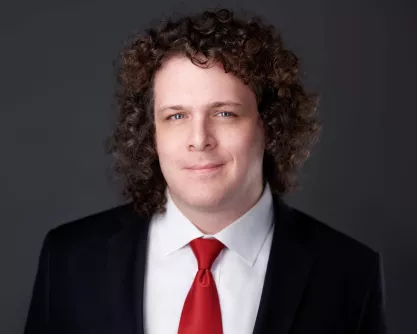
When Jodi Kantor of The New York Times published her story about the Alitos' flag flap from 2021, I wondered why it took more than three years for the story to surface. Turns out a reputable journalist, Bob Barnes of the Washington Post, investigated the issue at the time, and realized there was no story there. And Barnes was right.
[ . . . ]
[According to a Washington Post] spokesperson:
The Post decided not to report on the episode at the time because the flag-raising appeared to be the work of Martha-Ann Alito, rather than the justice, and connected to a dispute with her neighbors, a Post spokeswoman said. It was not clear then that the argument was rooted in politics, the spokeswoman said.
Why did the Post have enough sense sit on the story in 2021, but the Times ran it in 2024? I think the Times had a serious lapse in judgment. Indeed, there was wall-to-wall coverage about a non-story. Here Kantor was so, so eager to make a story happen that she stitched together random tweets and social media posts about the upside down flag, in order to disregard the most likely and natural meaning of Mrs. Alito's acts. To this day, I've not seen a single conservative who had any idea that the upside down flag had anything to do with "Stop the Steal." Even Ann Coulter had no clue!
Court dismisses challenge to regulation of COVID speech
- Michael McCann, “John Stockton loses case over regulation of Covid speech,” Sportico (May 26)

John Stockton . . . the Basketball Hall of Famer, took a hit last week when a judge dismissed his First Amendment lawsuit against Washington Attorney General Bob Ferguson and Washington Medical Commission executive director Kyle Karinen.
U.S. District Judge Thomas Rice ruled that Stockton’s case, which he brought with two physicians and the Children’s Health Defense (a nonprofit chaired by presidential candidate Robert F. Kennedy Jr.), was meritless.
The group sued in March, seeking a judicial declaration that the commission’s investigations into licensed medical professionals who publish disputed claims about COVID-19 violate the First Amendment and due process rights. Under Washington law, the commission is charged with regulating physicians to assure public confidence in the practice of medicine. It investigates allegations of misrepresentation, fraud, or dishonesty.
[ . . . ]
Judge Rice found several flaws in Stockton et al. v. Ferguson & Karinen. First, he reasoned the claims are unripe.
[ . . . ]
Rice also reasoned he must abstain from reviewing the claims. Under what’s called the “Younger Doctrine” (from the 1971 U.S. Supreme Court case Younger v. Harris), a federal court should refrain from considering demands for judicial declarations when there are ongoing state proceedings. The physicians who sued with Stockton are still under investigation by the commission.
[ . . . ]
The judge added that even if Stockton’s lawsuit was ripe and not subject to abstention, it doesn’t offer a plausible claim. Washington and other states, Rice stressed, have a “long-recognized authority to regulate medical professionals” and that authority “does not run afoul of the First Amendment.”
Related
- Eugene Volokh, “Religious Exemption Claim Brought by Employees Who Objected to COVID Vaccination and Testing Can Go Forward,” The Volokh Conspiracy (May 27)
Forthcoming scholarly article: Lakier and Douek counter Counterman v. Colorado opinion
- Genevieve Lakier and Evelyn Douek, “The First Amendment Problem of Stalking: Counterman, Stevens, and the Limits of History and Tradition,” California Law Review (forthcoming, 2025)
In Counterman v. Colorado, the Supreme Court decided an imaginary case. It held that Billy Ray Counterman’s conviction could not stand because it did not meet the First Amendment requirements for prosecutions based on threats. But this is puzzling because Counterman was not in fact convicted for making threats. He was convicted of stalking, under a law that does not require that the defendant threaten anyone in order to be guilty of the crime.
This Article argues that the Supreme Court’s confusion about the most basic facts of the case was not an aberration but instead reflects broader pathologies in First Amendment jurisprudence. These pathologies are a consequence of the impoverished view of the First Amendment’s boundaries depicted in the Court’s recent decisions, which suggest that the First Amendment’s doctrinal terrain can be described by a simple list of historically unprotected categories. This thin account of the First Amendment, and the doctrinal distortions it creates, are not inevitable, however.
The Article argues for an alternative, more multi-dimensional approach to the question of the First Amendment’s boundaries — one that rests on a richer understanding of the traditions of speech regulation in the United States — and sketches out its implications for the law of stalking and, potentially, many other areas of free speech law. Courts do not need to deny the facts of the cases they adjudicate to craft a First Amendment jurisprudence that is doctrinally coherent, historically informed, and normatively desirable.
New book on private censorship
- J.P. Messina, “Private Censorship” (Oxford University Press, 2023)
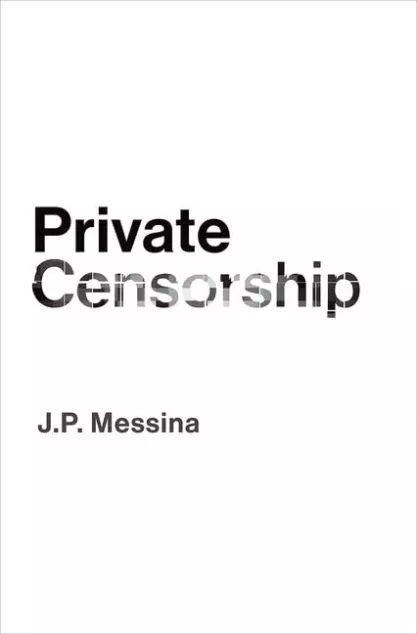
Concerns about censorship have once again reached a fever pitch across the liberal West. In other historical periods, such concerns may have marked reactions to book bans and burnings. Often, they followed prosecutions and subsequent jail time for things spoken or written. During the Red Scare, they were the hushed response to chilling state-sponsored watch-lists and employer-supported blacklists designed to ensure victory against communism.
Against this history, complaints about the new censorship appear differently. With respect to the new censorship, there are no book burnings, no prosecutions, no laws or committees. Indeed, there is no coercive state involvement at all. With a few notable exceptions, complaints about censorship in the 21st-century West are complaints about the behavior of private parties: social groups, employers, media conglomerates, social media platforms, and search engines.
To better understand the concerns surrounding nonstate interference with speech, Private Censorship offers an account of censorship, as well as an assessment of the ethical and political issues it raises across contexts. J.P. Messina asks and variously answers questions like: what should we think when employees get fired for things they say and how might patterns of such firings create a climate of fear inimical to free inquiry? When is it appropriate for social media firms to deplatform users, and what does it mean for our democracy that those in charge of such decisions are often wealthy Silicon Valley executives? Do search engines act as massive gatekeepers to information in troubling ways, and how might they be constrained, if they do? Along the way, Messina casts a critical eye on many popular proposals for responding to these complaints. Unlike these popular approaches, Private Censorship foregrounds the importance of rights to property, association, and free expression for thinking well about 21st-century censorship concerns.
‘So to Speak’ podcast with author of book on ‘private censorship’
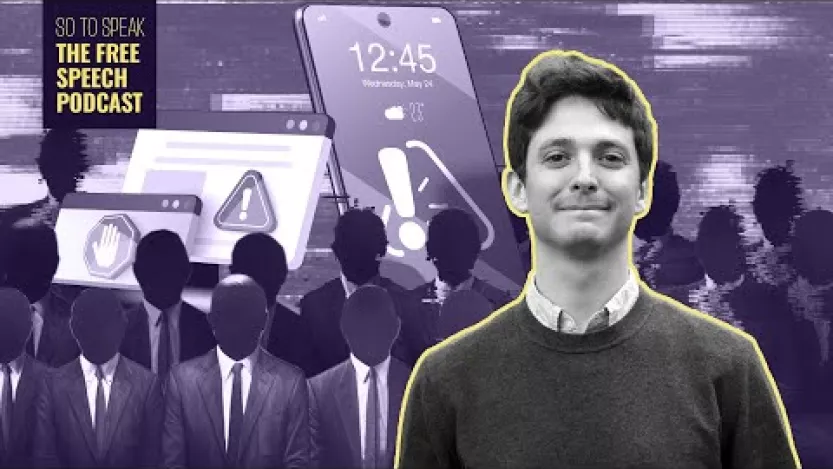
- “‘Private Censorship’ with J.P. Messina,” “So to Speak,” FIRE (May 21)
The First Amendment forbids government censorship. Private institutions, on the other hand, are generally free to restrict speech.
How should we think about private censorship and its role within a liberal society?
On [this] episode, we're joined by J.P. Messina, an assistant professor in the philosophy department at Purdue University and the author of the new book, “Private Censorship.”
Also on the show is Aaron Terr, FIRE's director of public advocacy.
Two videos on free speech on college campuses
- “Are all Palestine encampments free speech?” Reason (May 20)

- “Those Who Preach Free Speech Need to Practice It,” FIRE (May 6)
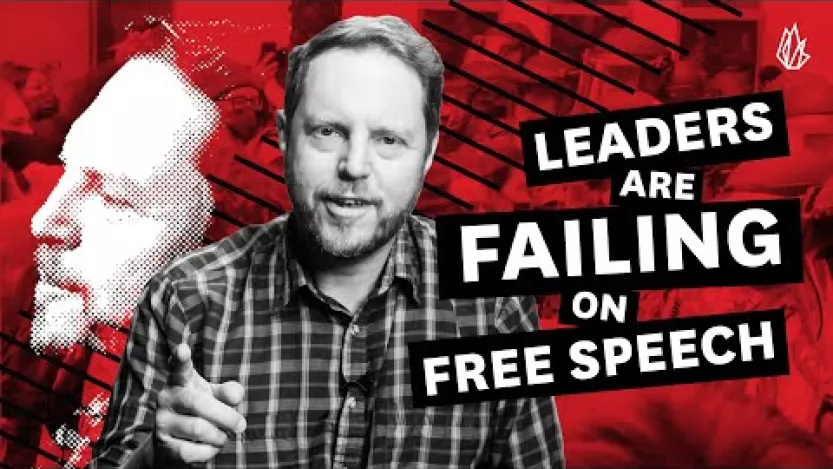
Video: Mchangama on history of free speech for the oppressed

- Jacob Mchangama, “Free speech is a weapon for the oppressed,” FIRE (Feb. 24)
Jacob Mchangama, FIRE Senior Fellow and author of “Free Speech: A History from Socrates to Social Media,” discusses the role free speech played in the fight to end American slavery. In the years since the adoption of the US Bill of Rights, the question of what to do with American slavery had reached a frustrating stalemate. The escalating conflict between abolitionists and pro-slavery factions often resulted in the suppression of free speech and press. This was the world that Frederick Douglass sought to reshape with his devotion to the principles of free speech, which is most clearly articulated in his 1860 address “A Plea for Freedom of Speech in Boston,” where he said “There can be no right of speech where any man, however lifted up, or however humble, however young, or however old, is overawed by force, and compelled to suppress his honest sentiments.” For Douglass and many other abolitionists, free speech was the most effective weapon in their crusade to end slavery, and it would become the foundation of the abolitionist movement’s success.
First Amendment salon on symbolic legacy 1955 response to Emmett Till murder
- “The 1955 Emmett Till Murder Trial: Its Lasting Symbolic and Legal Legacy,” Ronald Collins and Jason Downs (April 8)
The Salon welcomed Ronald Collins (co-chair, First Amendment Salons) and Jason Downs (Shareholder, Brownstein Hyatt Farber Schreck, LLP). Jason interviewed Ron about his new book, Tragedy on Trial: The Story of the Infamous Emmett Till Murder Trial, including Mamie Till-Bradley’s (later Mobley) famous open casket-funeral, various aspects of the case, access to the case file, and the badly flawed Look magazine story, topics that will be of particular interest to the First Amendment community.
Seth Berlin (co-chair, First Amendment Salons & Senior Counsel, Ballard Spahr) introduced the salon.
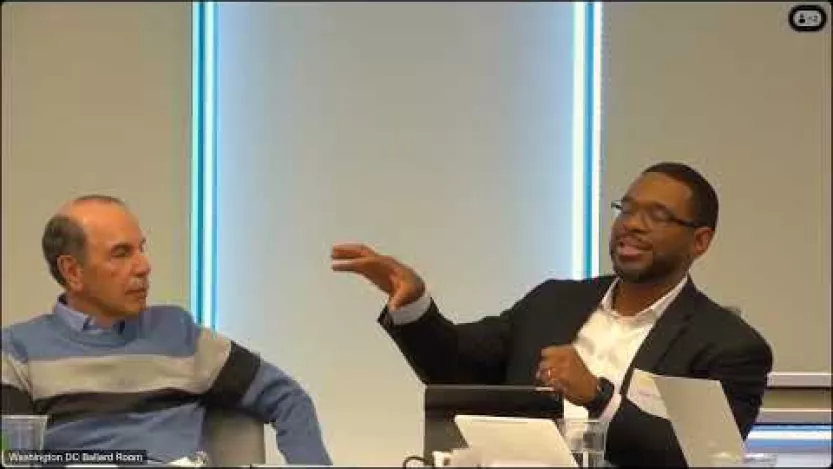
More in the news
- “Rutgers, Northwestern Defend Deals With Protesters: ‘We Had To Get the Encampment Down’,” First Amendment Watch (May 23)
- Bruce Haring, “CBS Claims First Amendment Allows It To Select Writers “Best Suited” For Its Programs In Discrimination Lawsuit Response,” Deadline (May 23)
- “Police Break Up Pro-Palestinian Camp at the University of Michigan,” First Amendment Watch (May 22)
- “REPORT: Americans don’t trust the government to make social media content decisions,” FIRE (May 21)
- “TikTok law threatening a ban if the app isn’t sold raises First Amendment concerns,” The Conversation (May 21)
- “CNN editor Celina Tebor to keynote FIRE’s free press workshop,” FIRE (May 21)
- Laurie Kellman and Joycelyn Geccker, “Israel-Hamas war testing whether campuses are sacrosanct places for speech, protest,” Free Speech Center (May 20)
- Rebecca McCray, “Censoring the News in New York Prisons,” New York Focus (May 20)
2023-2024 SCOTUS term: Free expression and related cases
Cases Decided
- O’Connor-Ratcliff v. Garnier
- Speech First, Inc. v. Sands (certiorari granted, judgment re the bias policy claims vacated, and case remanded to the Court of Appeals for the 4th Circuit with instructions to dismiss those claims as moot) (Thomas and Alito, dissenting)
Review granted
- Vidal v. Elster (argued Nov. 1)
- O’Connor-Ratcliff v. Garnier (decided March 15 — see below under “State Action”)
- Moody v. NetChoice, LLC and NetChoice, LLC v. Paxton (argued Feb. 26)
- National Rifle Association of America v. Vullo (argued March 18)
- Murthy v Missouri (argued March 18)
- Gonzalez v. Trevino (argued March 20)
Pending petitions
- No on E, San Franciscans Opposing the Affordable Care Housing Production Act, et al. v. Chiu
- Pierre v. Attorney Grievance Commission of Maryland
- O’Handley v. Weber
State action
- Lindke v. Freed (Barrett, J., 9-0: “The state-action doctrine requires Lindke to show that Freed (1) had actual authority to speak on behalf of the State on a particular matter, and (2) purported to exercise that authority in the relevant posts. To the extent that this test differs from the one applied by the Sixth Circuit, we vacate its judgment and remand the case for further proceedings consistent with this opinion.”)
- O’Connor-Ratcliff v. Garnier (Per Curiam: 9-0: “We granted certiorari in this case and in Lindke v. Freed (2024), to resolve a Circuit split about how to identify state action in the context of public officials using social media. Because the approach that the Ninth Circuit applied is different from the one we have elaborated in Lindke, we vacate the judgment below and remand the case to the Ninth Circuit for further proceedings consistent with our opinion in that case.”)
Review denied
- Mckesson v. Doe (Separate statement by Sotomayor, J.)
- Brokamp v. James
- Griffin v. HM Florida-ORL (application for stay denied)
- M. C. v. Indiana Department of Child Services
- Spectrum et al v. Wendler
- Porter v. Martinez
- Molina v. Book
- Porter v. Board of Trustees of North Carolina State University
- NetChoice, LLC v. Moody
- Alaska v. Alaska State Employees Association
- X Corp. v. Garland
- Tingley v. Ferguson (Justice Kavanaugh would grant the petition for a writ of certiorari. Justice Thomas, dissenting from the denial of certiorari (separate opinion). Justice Alito, dissenting from the denial of certiorari (separate opinion).)
- Jarrett v. Service Employees International Union Local 503, et al
- Sharpe v. Winterville Police Dept.
- Winterville Police Department v. Sharpe
- Stein v. People for the Ethical Treatment of Animals, Inc., et al.
- Blankenship v. NBCUniversal, LLC
- Center for Medical Progress v. National Abortion Federation
- Frese v. Formella
- Mazo v. Way
Free speech related
- Miller v. United States (pending) (statutory interpretation of 18 U.S.C. § 1512(c) advocacy, lobbying and protest in connection with congressional proceedings) // See also Fischer v. United States (argued April 16)
Last scheduled FAN
FAN 424: “Upside-down Justice – Samuel Alito, ‘Mrs. Alito,’ and the symbolic speech debacle”
This article is part of First Amendment News, an editorially independent publication edited by Ronald K. L. Collins and hosted by FIRE as part of our mission to educate the public about First Amendment issues. The opinions expressed are those of the article’s author(s) and may not reflect the opinions of FIRE or Mr. Collins.
Recent Articles
FIRE’s award-winning Newsdesk covers the free speech news you need to stay informed.

O holy fight: New Hampshire Satanic Temple statue threatened by more than vandals

California and other states are rushing to regulate AI. This is what they’re missing

One day after FIRE lawsuit, Congress passes changes to filming permits in national parks
